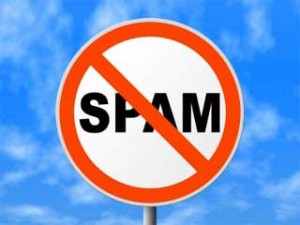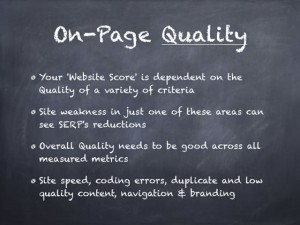Introduction to Google & SEO
In order to fix your rankings, first you need to be absolutely certain which of Google’s two significant recent updates has caused the problem. If your traffic dropped on or near the 24th April 2012 then the Penguin update is the cause of your ranking issues.
Penguin also penalizes the keywords with the most over-optimised exact match anchor text. The free back-link checking tool at majesticseo.com is the most convenient way to analyse your current keyword anchor text.
Back-Links
To comply with Penguin, your link text density needs to be less than 5%. The bulk of your linking anchor text should be URL links, brand links or junk links.
Use your company or website name for Brand links. Use different permutations of your domain name for URL links.
The weight given to links coming from the same C Class IP addresses have been greatly diminished, so target building new, high quality links from various servers.
It is more valuable than ever that your inbound links originate from relevant sites instead of random content sites. Aim to ask for links from other sites that have a good ‘trust’ score. Google now looks to see who links to the domains that link to you, therefore, the neighbourhoods you mix with online tend to be more important than ever.
Link Networks
It is best to steer clear of automated link networks because they generally produce spam grade links and when Google finds the network you will be penalized for the links within them.
 Be aware that any companies offering low cost links are usually using link networks in order to create the links at an affordable price.
Be aware that any companies offering low cost links are usually using link networks in order to create the links at an affordable price.
The quality of your links is incredibly important for your long term rankings, so choose a reputable SEO company like Bedford SEO consultants Deeho who only create Google friendly links that won’t be penalised in Google in the future.
On Page Optimization
Your primary search term keyword density on each page should not exceed 2 -3%. Adding a link to a .gov or .edu site from your content will enhance your website’s ‘quality score’.
Content Quality
The only content that you should have on your site should be unique, good quality and well written. Google like it when you link from within your site content using phrases in the text to other information pages on your own site as well as to external ‘authority’ domains.
The quality of your content is directly related to the quality of your web design – cheapresponsivewebdesign.co.uk will help if you need it – and site construction. Each element needs to represent quality.
The quality of your content will reflect the performance of your site across all the internet marketing activities you do including; Facebook and Twitter marketing, SEO and even Google Adwords (PPC).
How to Use Media
Videos and pictures are very useful content. Images are a great way to break up large sections of text and help to explain your site content. Videos are ideal for improving the time that visitors spend on your site.
Ensure that you use the image alt text attribute to include a variety of keyword rich descriptions of each image. Vary the keywords and phrases used. All images on your pages ought to have alt text that describes the picture using different keyword variations for each image.
Google can gauge the ‘reading age’ for your content and so can establish if it was written by a child or a professor. For this reason, spell check all your content and make sure it is grammatically correct.
Research shows that writing 500 words or more is helpful to SERP’s as long as it is quality content. There isn’t any point waffling just to add words to the page, but quality content will help your rankings.
If real people like your content and engage with it, spending time on your site, then Google will reward you with better rankings. Writing purely for search engines is very 2007! Word association is used by Google to understand the meaning of your content. Called latent semantic indexing, Google associated related words around the same topic so you no longer need to repeat the same keyword over and over, but can instead use a variety of keywords within your content and write naturally.
Best Use of Metatags
You must add bespoke meta data tags to every single page of your site. If pages have the same meta-tags on several pages you will then be penalized in SERP’s. The page meta description is usually used in SERP’s under your page title. This is an chance for you to improve click through rates from the search engines which counts as a way of measuring your sites user engagement. Get you metatags optimised at seo-seo-seo.co.uk and see near instant improvements in your traffic volumes.
Bounce Rate Metrics
Slow loading websites never rank well in Google’s results so make sure that your site has a fast load speed, otherwise you will not get the rankings you deserve. The amount of visitors that don’t like what they find on your site and hit the back button is called the bounce rate. Your bounce rate needs to be 55% or less for top Google rankings.
Visitor Page Views
The more site pages that each visitor looks at, the better your website content is considered to be, so you will rise in the rankings. You can enhance your Google rankings by raising the average time that visitors spend on your website. Google relates time on-site with content quality and relevance.
